Prospective Graduate Students
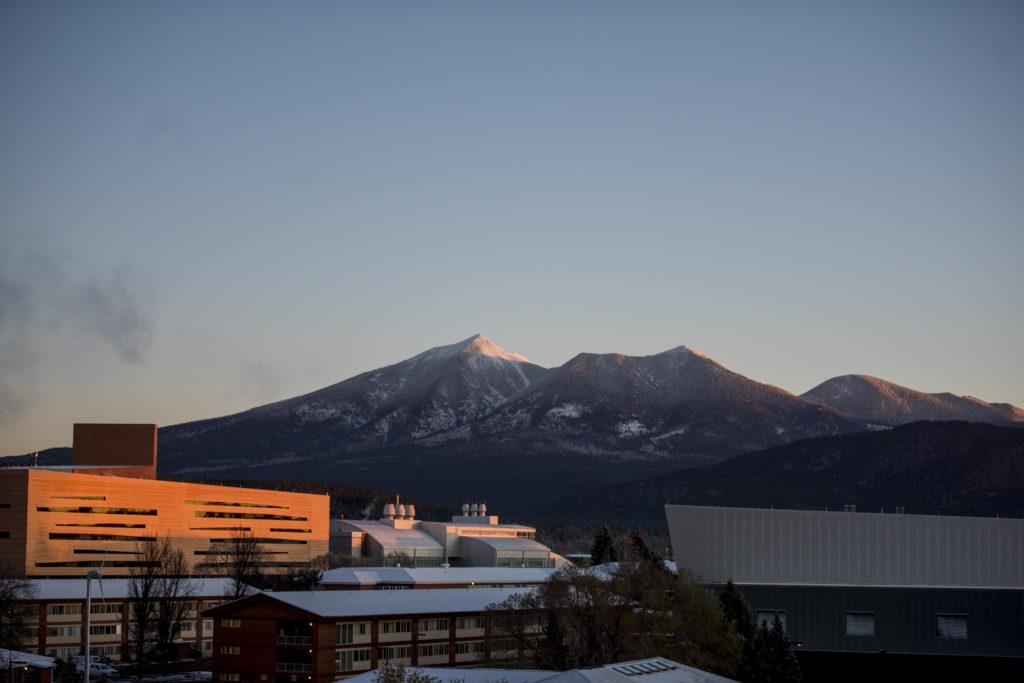
PhD and MS positions in Ecosystem Ecology are available in the Center for Ecosystem Science and Society (Ecoss) at Northern Arizona University. Graduate student benefits include a stipend (teaching assistantship or research assistantship), tuition waiver, health insurance, and payment of non-tuition fees.
The Ecoss mission is to conduct high-impact, innovative research on ecosystems and how they respond to and shape environmental change, to train next-gen scientists, and to communicate discovery and its relevance to people.
Interested in applying?
The first step to becoming an Ecoss graduate student is to find a potential advisor. Candidates should explore our available research opportunities below, and contact the professor whose interests align most closely. Please include a cover letter describing your background, research interests, and qualifications, as well as a current resumé or curriculum vitae.
Ecoss graduate students earn their degrees through multiple programs because faculty affiliations differ. These programs include M.S. or Ph.D. programs in the Department of Biological Sciences, the School of Informatics, Computing, and Cyber Systems (SICCS), the School of Earth and Sustainability (SES), Department of Sociology and the School of Forestry. Potential advisors can help you determine which program is the most appropriate to apply to.
When should you apply? The NAU Graduate College publishes current deadlines for each program. Though these differ across programs, Ecoss prefers that you apply before January 15. Further, applications submitted before December 1 may be considered for a prestigious NAU Presidential Fellowship.
Ecoss is committed to fostering a diverse and inclusive workplace. We strongly encourage applications from women and members of historically marginalized groups. We are a partner in the American Geophysical Union’s (AGU) Bridge program. Some prospective students may wish to apply through that program, which employs different deadlines and instructions. Learn more about the AGU bridge program here.
Graduate Research Opportunities
Ecoss has thirteen core faculty members.Below, we list current opportunities posted by Matthew Bowker (biocrusts, drylands & restoration ecology), Mariah Carbone (earth system science, carbon cycling), Bruce Hungate, Egbert Schwartz & Paul Dijkstra (microbial ecology, soil ecology), George Koch (physiological ecology & global change ecology), Michelle Mack & Xanthe Walker (northern ecosystems, global change & wildfire) and Ted Schuur (Arctic ecosystems & global change ecology). Check back for updates and new postings!
Environmental Exposure in Native American Communities
1. Oil and Gas fields in Aneth Chapter
2. Abandoned Uranium Mine in Oljato, Utah
3. A 2,500-gallon water tank so community members can have access to water
4. Scenic view overlooking the Mittens in Monument Valley Tribal Park.
Description: Description: Do research on environmental exposure in Native American communities. Research on uranium exposure and ambient gases from oil and gas fields in Aneth, Utah, and Counselor, New Mexico. Water-related research, such as water quality and access, is needed. I work with Native-led grassroots organizations such as Tolani Lake Enterprise and Tse Bii. I want to help make a sustainable community using solar panels, composting, showers, and rainwater catchments for tribal elders, implementing traditional ecological knowledge, and working with traditional knowledge holders.
Degree Program: Master of Science in Geography
Contact: Tommy Rock tommy.rock@nau.edu
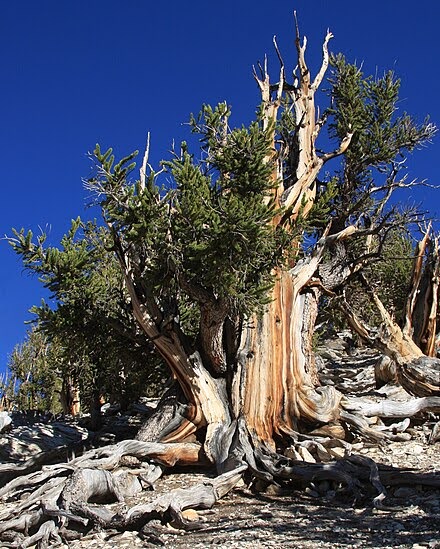
Stored nonstructural carbon in oldest trees on Earth
Description: Tree ring records have long been used to understand past climate and solar cycles. We will evaluate the impact of tree physiology, specifically, stored nonstructural carbon pools, on how tree rings record the atmosphere using radiocarbon. We will study some of the oldest tree species on Earth, including Bristlecone pine (Pinus longaeva). This work is part of a larger collaborative project aiming to quantify uncertainties in tree ring records, and how this may impact our understanding of past and future solar activity. Experience in dendrochronology and isotopes is preferred.
Degree program: Ph.D. in Biological Sciences (preferred starting date Spring 2025)
Contact: mariah.carbone@nau.edu
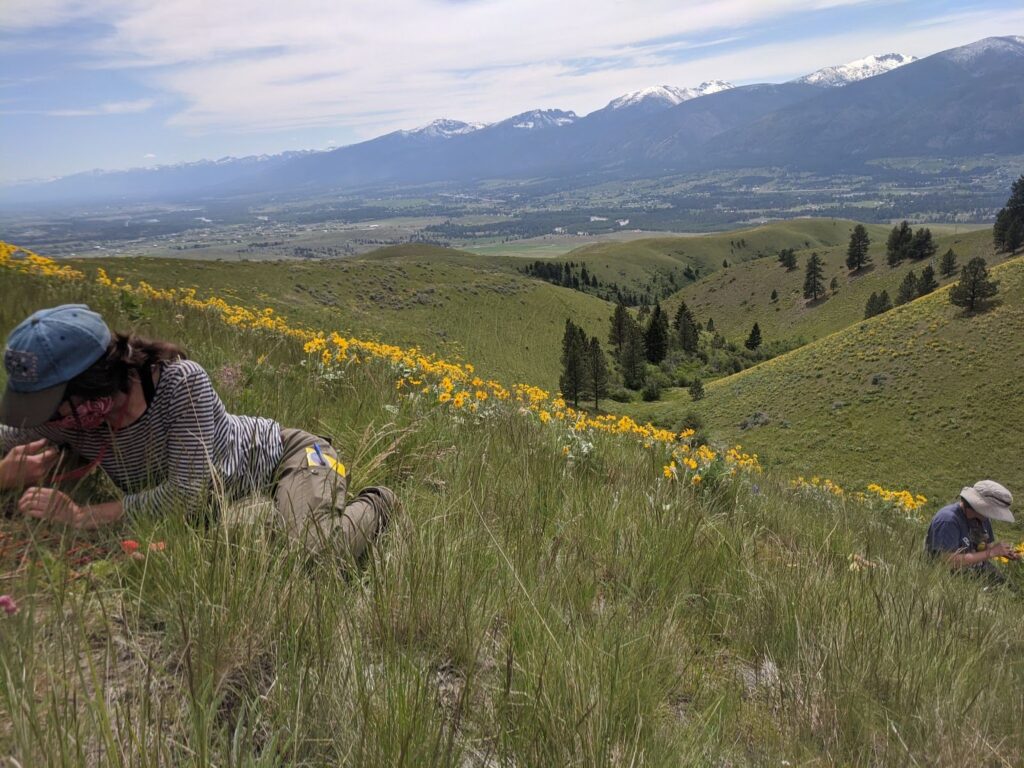
Restoring the living skin of rangelands
Description: The Dryland & Intermountain Restoration Team (DIRT lab), is seeking applications from prospective students interested in refining and advancing techniques to restore biological soil crusts (biocrusts) in degraded sites in Montana. Biocrusts are a coherent “living skin” on the soil surface engineered by soil-dwelling organisms including tiny non-vascular plants and microbes. Biocrusts are integral to rangeland ecosystem function because they prevent erosion, protect fertility and regulate hydrology. The student would join a team including a post-doc, and another student in the project, and focus on refinement of our novel field techniques and their infusion into a broader ecological restoration program being implemented at a private ranch, currently being managed for conservation and science.
Degree program: Ph.D. in Forestry.
Contact: Matthew Bowker matthew.bowker@nau.edu
More information: Antoninka A., Faist A., Rodriguez-Caballero E., Young K.E., Chaudhary V.B., Condon L.A., Pyke D.A. 2020. Biological soil crusts in ecological restoration: emerging research and perspectives. Restoration Ecology 28:S3-S8.https://onlinelibrary.wiley.com/doi/full/10.1111/rec.13201
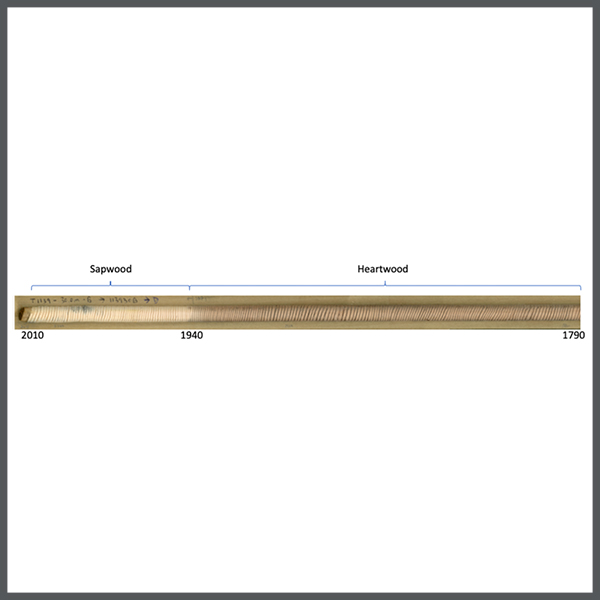
Using radiocarbon to understand the dynamics of heartwood formation.
Description: The formation of heartwood in trees increases wood density, decay resistance, and the permanence of carbon stored in live and fallen trees. Heartwood is formed by the deposition of a variety of chemical compounds into the oldest rings of sapwood. The difficulty of tracking movement of carbon compounds into new heartwood has limited understanding the dynamics of its formation. We seek to overcome this challenge by analyzing the radiocarbon content of individual annual growth rings, including sapwood and heartwood, and by relating ring 14C to the known atmospheric 14C-CO2 record.
Degree program: MS or Ph.D. in Biological Sciences
Contact: george.koch@nau.edu
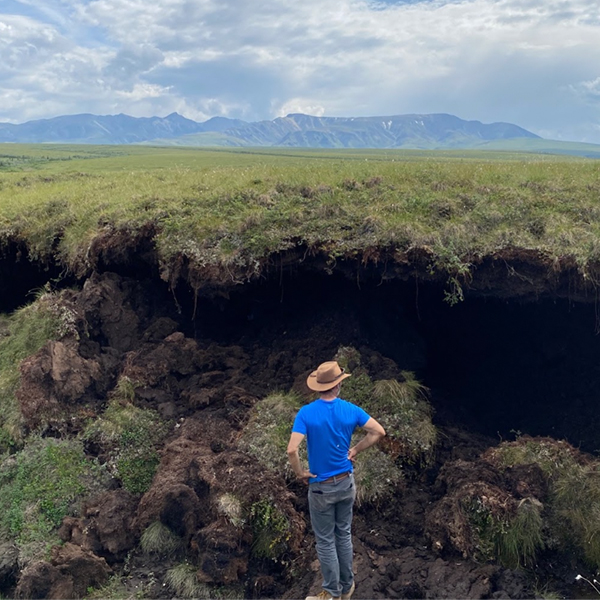
Arctic carbon emissions and the global climate
Description: The Schuur lab is a leader in scientific research on the risk of Arctic carbon emissions to global climate. Field experiments and observations link ecosystem science and climate change in locations across Alaska. Radiocarbon is a unique research tool applied used carbon date ecosystems and track old carbon loss from permafrost.
A new research direction for the lab is applying radiocarbon to map fossil fuel emissions in Arizona urban areas. This project combines citizen/community science, annual plant prospecting, and isotopes to help manage greenhouse gas emissions.
Degree program: PhD or MS in Biological Sciences
Contact: Ted Schuur; ted.schuur@nau.edu
More information: www2.nau.edu/schuurlab-p/
permafrostcarbon-aware.org
https://in.nau.edu/aceisotopelab/

Sink limitation of wood growth in trees
Description: Recent research indicates that wood growth may be particularly sensitive to nighttime water status, which influences turgor pressure and carbon sink strength of growing tissues. Using a combination of approaches including high resolution dendrometry, psychrometry, and micromet measurements, we will examine this idea in coast redwood, Sequoia sempervirens.
Degree program: MS or Ph.D. in Biological Sciences
Contact: george.koch@nau.edu
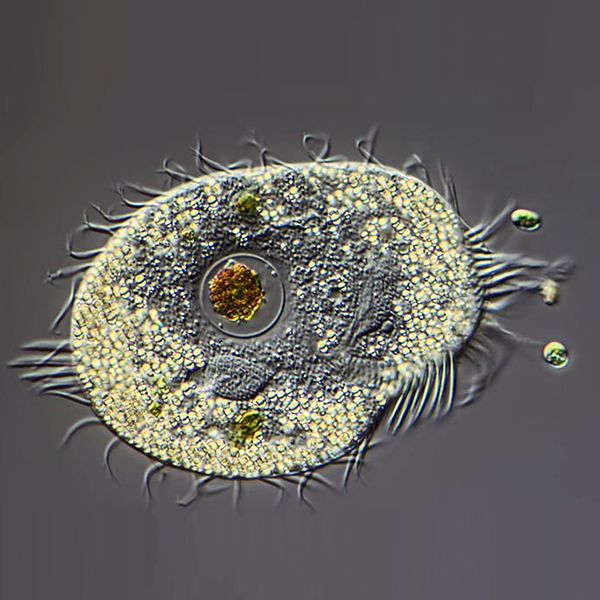
Microbial Predation and soil organic matter formation
Description: Soil organic matter is derived from microorganisms and is much more abundant than carbon in the atmosphere. Improved methods for soil organic matter management are urgently needed to sequester carbon in soil, improve agricultural yields, and decrease soil erosion and water use. Predators of microbes in soil, such as the protist shown above, release carbon from soil when they feed on bacteria. We are studying predation in soil using advanced omics techniques, including transcriptomics, metagenomics and quantitative stable isotope probing in grasslands in California, conifer forests in Arizona and agricultural fields in Texas to improve soil carbon storage.
Degree program: M.Sc.. or Ph.D. in Biology
Contact: Bruce Hungate (Bruce.Hungate @nau.edu), Egbert Schwartz (Egbert.Schwartz@nau.edu), Paul Dijkstra (Paul.Dijkstra@nau.edu)
More information: https://doi.org/10.1128/mbio.00466-21
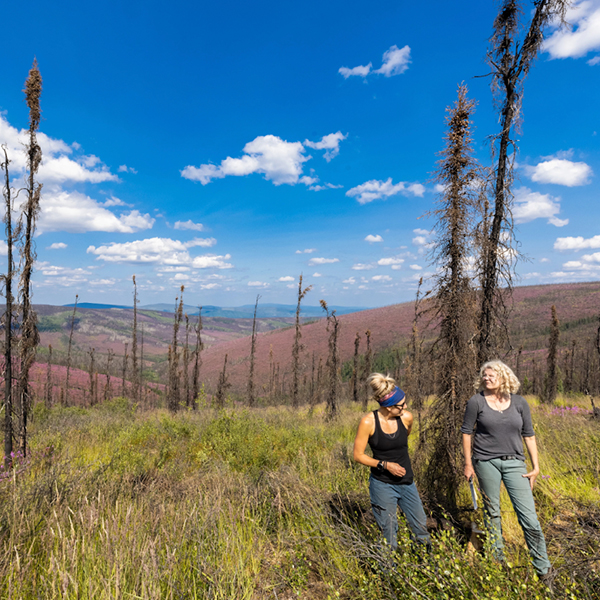
Climate warming, increasing disturbance, and the carbon balance of boreal forest and Arctic tundra ecosystems
Description: We work on the ecology of northern forests and tundra throughout Alaska, Canada, and Siberia. We study the community and ecosystem impacts of a warming climate on plants, soils, and people. Our current research focuses on changing northern disturbance regimes and impacts on vegetation succession, nutrient dynamics, carbon storage, and feedbacks to climate. We also apply ecological theory to design effective wildfire management strategies that increase human adaptation to a warming climate. We focus on ecosystem and landscape ecology and employ a wide range of field and laboratory methods, including radiocarbon and stable carbon and nitrogen isotopes, plant and soil chemical analyses, dendrochronology, and statistical modeling. Through long-term collaborations, we access methods in molecular biology and remote sensing. We lead the NSF-funded Bonanza Creek Long-term Ecological Research program (Michelle is the PI, and Xanthe leads wildfire research) and participate in the NASA Arctic-Boreal Vulnerability Experiment.
Degree program: M.Sc. or Ph.D. in Biological Sciences or Ph.D. in Ecoinformatics (in the School of Informatics, Computing, and Cybersystems).
Contact: Xanthe Walker (xanthe.walker@nau.edu) or Michelle Mack (michelle.mack@nau.edu)
More information: https://macklab.nau.edu/ https://ac.nau.edu/xwalkerlab/
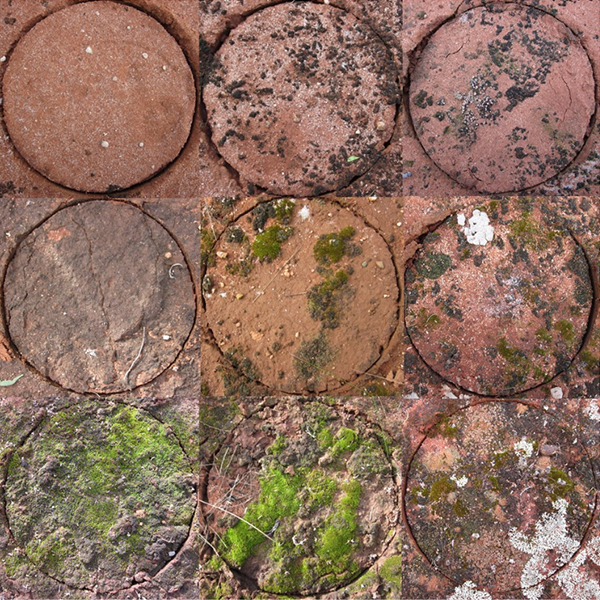
Model system ecology using biocrusts
Description: Model systems display a general process or property in an understandable way, making them especially useful to answer research questions compared to other study systems. We consider biological soil crusts (biocrusts) to be a useful and underutilized model system for community, ecosystem and landscape ecology. They can be grown in custom compositions and configurations under manipulable conditions using our greenhouse-based growing systems to conduct space-efficient multi-factor experiments and generate ecological insight. We seek motivated students with strong writing skills and innovative ideas interested in pursuing graduate funding through NSF’s Graduate Research Fellowship program or a similar program. Biocrusts can offer insight into species interactions, community assembly, biodiversity and ecosystem function, resilience and resistance, spatial pattern and heterogeneity among other areas of inquiry. What ecological research questions would you like to answer using biocrusts?
Degree program: Ph.D. in Forestry.
Contact: matthew.bowker@nau.edu
More information: https://link.springer.com/article/10.1007/s10531-014-0658-x